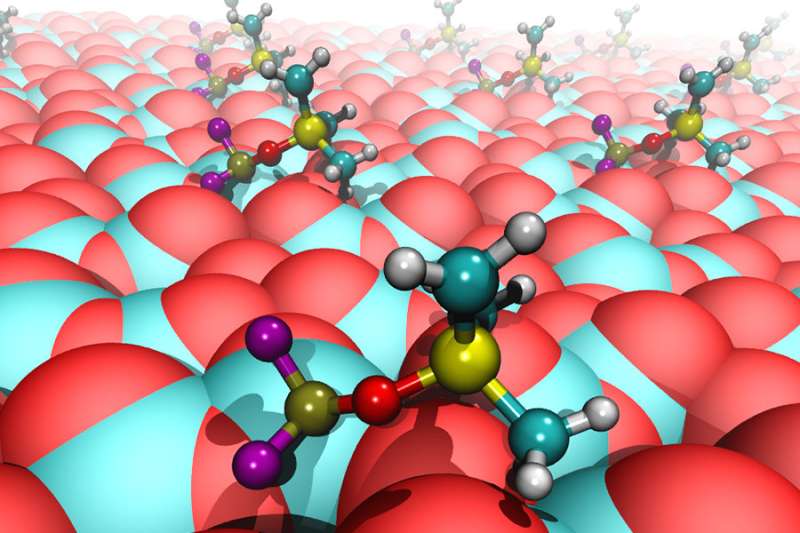The science behind pickled battery electrolytes

Battery researchers at the U.S. Department of Energy's (DOE) Argonne National Laboratory have discovered an important chemical reaction that resembles the method used to make pickles. The reaction provides key insights into the behavior of a common electrolyte additive used to boost performance.
The energy storage system of choice for electric vehicles is the lithium-ion battery. In all electric-vehicle batteries, the more energy stored, the longer the driving range. Currently, however, the cathode limits the maximum energy storage capacity of the lithium-ion battery. Overcoming that limitation requires cathode materials that have high capacity and operate at high voltage. While such materials have been identified, their long-term use remains problematic, because they degrade the liquid electrolyte in contact with the energized cathode during the lithium-ion cell's charge–discharge cycle.
One well-known means to solve that problem is inserting a performance-boosting additive into the liquid electrolyte. This additive modifies the cathode surface by forming a protective layer that stalls the electrolyte decomposition. One such common additive, proven to be effective, is tris(trimethylsilyl)phosphite, better known as TMSPi. The mechanism behind its beneficial effect had been a mystery—until now.
The surprising new result is that the TMSPi molecule itself is not involved directly in the protection of the cathode. The active component is a different molecule, PF2OSiMe3, which is chemically derived from TMSPi and represented structurally in the image on the left.
This compound—one among many such products—slowly forms as the lithium salt in the electrolyte reacts with TMSPi. One of the Argonne authors, Senior Materials Scientist Daniel Abraham, compared the process "to anaerobic fermentation of cucumbers in brine, which gives us tasty pickles."
In their research, Abraham and his colleagues demonstrated that this "pickling" offers several beneficial effects. The reaction product diminishes the rise in electrical resistance that normally occurs in the battery cell during charge–discharge cycling. An undesirable slowing down of lithium ions moving between cathode and anode and an irreversible change in the cathode composition trigger the rise in resistance; decreasing the resistance rise allows rapid charging and discharging of the lithium-ion cell.
The TMPSi product also reduces the harmful loss of the transition metal (typically cobalt or manganese) in the cathode material. After escaping from the cathode, the transition metal ions pass through the electrolyte to the anode, degrading its performance during prolonged cycling. The TMPSi product not only limits the transition metal loss but also reduces the occurrence of parasitic currents that degrade the charge–discharge process.
"Key to success in this study was the identification of the origin of these beneficial effects," added Abraham. He elaborated that his team's computational studies revealed that the reaction product PF2OSiMe3 strongly binds to reaction centers on the cathode surface without causing the detrimental removal of oxygen from the surface. This surface-bound molecule can further react with the electrolyte, transforming into a still-stronger binding molecule that permanently caps the reaction centers on the cathode, stabilizing the interface between liquid electrolyte and solid electrode. "As a result," Abraham reports, "battery performance actually improves as the TMPSi electrolyte additive ages."
Abraham also reports that this early-stage research study has an important practical application. "Now that we better understand the mechanism for the cathode-protective action by the phosphite, we can be more systematic in finding new ways of achieving and improving this pickling of the electrolyte additive."
A recently published article in The Journal of Physical Chemistry, titled "Chemical 'Pickling' of Phosphate Additives Mitigates Impedance Rise in Li Ion Batteries," describes the work.
Journal information: Journal of Physical Chemistry A
Provided by Argonne National Laboratory




















